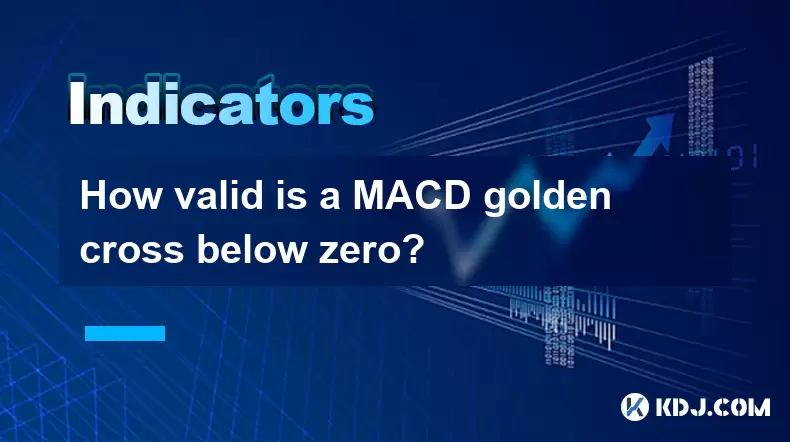-
 Bitcoin
Bitcoin $114700
-0.25% -
 Ethereum
Ethereum $4771
0.94% -
 XRP
XRP $3.021
0.01% -
 Tether USDt
Tether USDt $0.9997
0.00% -
 BNB
BNB $864.2
-3.12% -
 Solana
Solana $205.0
1.66% -
 USDC
USDC $0.9999
-0.02% -
 Dogecoin
Dogecoin $0.2304
-2.26% -
 TRON
TRON $0.3650
0.65% -
 Cardano
Cardano $0.8969
-1.76% -
 Chainlink
Chainlink $25.70
-0.57% -
 Hyperliquid
Hyperliquid $43.91
0.40% -
 Stellar
Stellar $0.4066
-1.11% -
 Sui
Sui $3.628
-2.57% -
 Ethena USDe
Ethena USDe $1.000
0.00% -
 Bitcoin Cash
Bitcoin Cash $593.0
0.47% -
 Avalanche
Avalanche $25.11
-5.72% -
 Hedera
Hedera $0.2462
-1.16% -
 Litecoin
Litecoin $119.0
-1.65% -
 UNUS SED LEO
UNUS SED LEO $9.597
-0.19% -
 Toncoin
Toncoin $3.319
-0.55% -
 Shiba Inu
Shiba Inu $0.00001286
-2.24% -
 Uniswap
Uniswap $10.98
-2.34% -
 Polkadot
Polkadot $4.042
-2.40% -
 Dai
Dai $0.9999
0.00% -
 Cronos
Cronos $0.1593
3.31% -
 Bitget Token
Bitget Token $4.678
-0.75% -
 Aave
Aave $347.8
-4.97% -
 Monero
Monero $271.4
2.50% -
 Ethena
Ethena $0.7005
-5.68%
How valid is a MACD golden cross below zero?
A MACD golden cross below zero may signal early bullish momentum in crypto, but it requires confirmation from price action, volume, and other indicators to avoid false signals.
Aug 12, 2025 at 10:08 am

Understanding the MACD Indicator and Its Components
The Moving Average Convergence Divergence (MACD) is a widely used technical analysis tool in the cryptocurrency trading space. It consists of three primary elements: the MACD line, the signal line, and the histogram. The MACD line is calculated by subtracting the 26-period Exponential Moving Average (EMA) from the 12-period EMA. The signal line is typically a 9-period EMA of the MACD line. When the MACD line crosses above the signal line, it forms what traders refer to as a golden cross.
A key aspect often overlooked is the position of the MACD line relative to the zero line. When the MACD line is below zero, it indicates that the shorter-term average (12-period EMA) is below the longer-term average (26-period EMA), signaling bearish momentum. A golden cross below zero occurs when the MACD line crosses above the signal line while both remain beneath the zero line. This scenario raises questions about the strength and reliability of the bullish signal in such a context.
Interpreting a Golden Cross Below Zero in Crypto Markets
In the volatile world of cryptocurrency, momentum shifts rapidly, and signals must be interpreted with caution. A golden cross below zero may suggest early signs of bullish momentum returning, but it does not confirm a full reversal. Since the overall trend is still technically bearish (MACD line below zero), the signal should be viewed as a potential early warning of recovery rather than a definitive buy signal.
Cryptocurrency traders often use this signal in conjunction with other indicators such as Relative Strength Index (RSI) or volume analysis to confirm whether the market is exiting oversold conditions. For example, if Bitcoin’s MACD generates a golden cross below zero while the RSI moves from 30 to 45, it may indicate accumulating buying pressure. However, without price action confirmation—such as breaking a key resistance level—the signal remains speculative.
Step-by-Step Analysis of a MACD Golden Cross Below Zero
To assess the validity of a golden cross below zero, traders should follow a structured approach:
- Confirm the crossover: Use a candlestick chart with MACD indicator enabled. Ensure that the MACD line (blue) crosses above the signal line (orange).
- Check the zero line position: Verify that both lines are below the zero threshold on the MACD histogram. This confirms bearish context.
- Analyze price action: Look for signs of bullish reversal patterns such as higher lows, bullish engulfing candles, or breakouts from descending trendlines.
- Cross-verify with volume: Increasing trading volume during the crossover supports the legitimacy of the move.
- Use support levels: If the crossover occurs near a historical support zone (e.g., previous swing low), the signal gains more credibility.
Each of these steps helps filter false signals. For instance, Ethereum showing a golden cross below zero during a 30% correction might indicate a retracement rather than a trend reversal, especially if volume remains flat.
Historical Performance of MACD Golden Crosses Below Zero in Cryptocurrencies
Backtesting on major cryptocurrencies reveals mixed results. In Bitcoin’s 2022 bear market, several golden crosses occurred below zero during brief rallies, only for the price to resume its downtrend shortly after. These were false signals triggered by short-term squeezes or whale manipulation. However, during the early stages of the 2023 recovery, a golden cross below zero preceded a sustained upward move once the MACD line eventually crossed above zero.
Altcoins like Solana and Cardano have shown similar patterns. A golden cross below zero during extreme fear conditions (as measured by the Crypto Fear & Greed Index) had a higher success rate when followed by a close above the 50-day Simple Moving Average (SMA). This suggests that while the signal alone is weak, its predictive power increases when combined with broader market structure analysis.
Practical Trading Strategy Using Below-Zero Golden Crosses
Traders can incorporate this signal into a risk-managed strategy with precise execution steps:
- Set up the MACD indicator on your preferred trading platform (e.g., TradingView, Binance). Use default settings: 12, 26, 9.
- Wait for the crossover below zero. Do not act immediately upon the cross.
- Monitor the next 3–5 candlesticks for confirmation. Look for consecutive green candles or a close above a recent resistance level.
- Enter a small position (e.g., 1–2% of portfolio) if confirmation occurs. Avoid full commitment.
- Place a stop-loss just below the recent swing low to limit downside risk.
- Set a take-profit at the nearest resistance level or use a trailing stop to capture momentum.
This method reduces exposure to whipsaws. For example, if Litecoin shows a golden cross below zero at $75, entering at $76 with a stop-loss at $73 and targeting $85 aligns with prudent risk management.
Common Misconceptions About MACD Golden Crosses
Many traders assume that any golden cross is a strong buy signal, but this is not accurate—especially in bear markets. A golden cross below zero lacks the momentum strength of one occurring above zero. The latter reflects bullish dominance, while the former suggests only a slowdown in selling pressure.
Another misconception is that the MACD works equally well across all timeframes. On lower timeframes (e.g., 15-minute charts), golden crosses below zero generate excessive noise due to market microstructure. They are more reliable on daily or weekly charts, where signals are less frequent but more meaningful.
Some traders also ignore divergence. A bullish divergence—where price makes a lower low but MACD makes a higher low—adds weight to a below-zero golden cross. This indicates weakening bearish momentum, increasing the signal’s validity.
Frequently Asked Questions
Q: Can a MACD golden cross below zero lead to a sustained uptrend?
Yes, it can, but only if followed by the MACD line crossing above zero and confirmed by strong price action and volume. Early-stage recoveries in bear markets often begin with such signals.
Q: Should I use different MACD settings for cryptocurrencies?
Some traders adjust settings (e.g., 8, 17, 9) to make MACD more responsive to crypto volatility. However, default settings remain effective for filtering out noise on higher timeframes.
Q: How long should I wait for confirmation after a below-zero golden cross?
Wait for at least 2–3 closing candles showing bullish momentum. Immediate action increases the risk of entering a fakeout.
Q: Does the golden cross below zero work better in ranging or trending markets?
It tends to produce more false signals in strongly trending bear markets. It performs better in ranging or oversold conditions where mean reversion is likely.
Disclaimer:info@kdj.com
The information provided is not trading advice. kdj.com does not assume any responsibility for any investments made based on the information provided in this article. Cryptocurrencies are highly volatile and it is highly recommended that you invest with caution after thorough research!
If you believe that the content used on this website infringes your copyright, please contact us immediately (info@kdj.com) and we will delete it promptly.
- Decoding Crypto Arbitrage: Spotting Premiums and MIX Opportunities
- 2025-08-24 20:45:34
- Bitcoin Wallets Meet Layer Brett: 16x Gains and the Future of Crypto in 2025
- 2025-08-24 20:45:34
- Dogecoin Price Prediction and the Rise of Crypto Presales: Is DOGE Still King?
- 2025-08-24 21:05:13
- MAGACOIN: Riding the Crypto Renaissance Wave or Just Another Meme?
- 2025-08-24 21:05:13
- Crypto Crossroads: Dogecoin, Stellar, and the Search for 2025's Top Coin
- 2025-08-24 19:25:32
- Bitcoin Price Swings, BTC News & Remittix: What's Hot Now?
- 2025-08-24 18:45:35
Related knowledge

What does it mean when the +DI and -DI cross frequently in the DMI indicator but the ADX is flattening?
Aug 11,2025 at 03:15am
Understanding the DMI Indicator ComponentsThe Directional Movement Index (DMI) is a technical analysis tool composed of three lines: the +DI (Positive...

What does the sudden appearance of a "dark cloud cover" candlestick pattern during an uptrend indicate?
Aug 13,2025 at 11:35am
Understanding the 'Dark Cloud Cover' Candlestick PatternThe dark cloud cover is a bearish reversal pattern in technical analysis that typically appear...

What does it mean when the moving average, MACD, and RSI all send buy signals simultaneously?
Aug 11,2025 at 01:42pm
Understanding the Convergence of Technical IndicatorsWhen the moving average, MACD, and RSI all generate buy signals at the same time, traders interpr...

What does it mean when both the KDJ indicator and the RSI show overbought signals simultaneously?
Aug 13,2025 at 11:35am
Understanding the KDJ Indicator in Cryptocurrency TradingThe KDJ indicator is a momentum oscillator derived from the Stochastic Oscillator, widely use...

What does it mean when the price is trading above the SAR indicator but the red dots are densely packed?
Aug 09,2025 at 11:49pm
Understanding the SAR Indicator and Its Visual SignalsThe SAR (Parabolic Stop and Reverse) indicator is a technical analysis tool used primarily to de...

What does it mean when the candlestick chart forms a "Morning Star" but trading volume is sluggish?
Aug 12,2025 at 06:28pm
Understanding the Morning Star Candlestick PatternThe Morning Star is a three-candle bullish reversal pattern commonly observed in cryptocurrency pric...

What does it mean when the +DI and -DI cross frequently in the DMI indicator but the ADX is flattening?
Aug 11,2025 at 03:15am
Understanding the DMI Indicator ComponentsThe Directional Movement Index (DMI) is a technical analysis tool composed of three lines: the +DI (Positive...

What does the sudden appearance of a "dark cloud cover" candlestick pattern during an uptrend indicate?
Aug 13,2025 at 11:35am
Understanding the 'Dark Cloud Cover' Candlestick PatternThe dark cloud cover is a bearish reversal pattern in technical analysis that typically appear...

What does it mean when the moving average, MACD, and RSI all send buy signals simultaneously?
Aug 11,2025 at 01:42pm
Understanding the Convergence of Technical IndicatorsWhen the moving average, MACD, and RSI all generate buy signals at the same time, traders interpr...

What does it mean when both the KDJ indicator and the RSI show overbought signals simultaneously?
Aug 13,2025 at 11:35am
Understanding the KDJ Indicator in Cryptocurrency TradingThe KDJ indicator is a momentum oscillator derived from the Stochastic Oscillator, widely use...

What does it mean when the price is trading above the SAR indicator but the red dots are densely packed?
Aug 09,2025 at 11:49pm
Understanding the SAR Indicator and Its Visual SignalsThe SAR (Parabolic Stop and Reverse) indicator is a technical analysis tool used primarily to de...

What does it mean when the candlestick chart forms a "Morning Star" but trading volume is sluggish?
Aug 12,2025 at 06:28pm
Understanding the Morning Star Candlestick PatternThe Morning Star is a three-candle bullish reversal pattern commonly observed in cryptocurrency pric...
See all articles

























































































